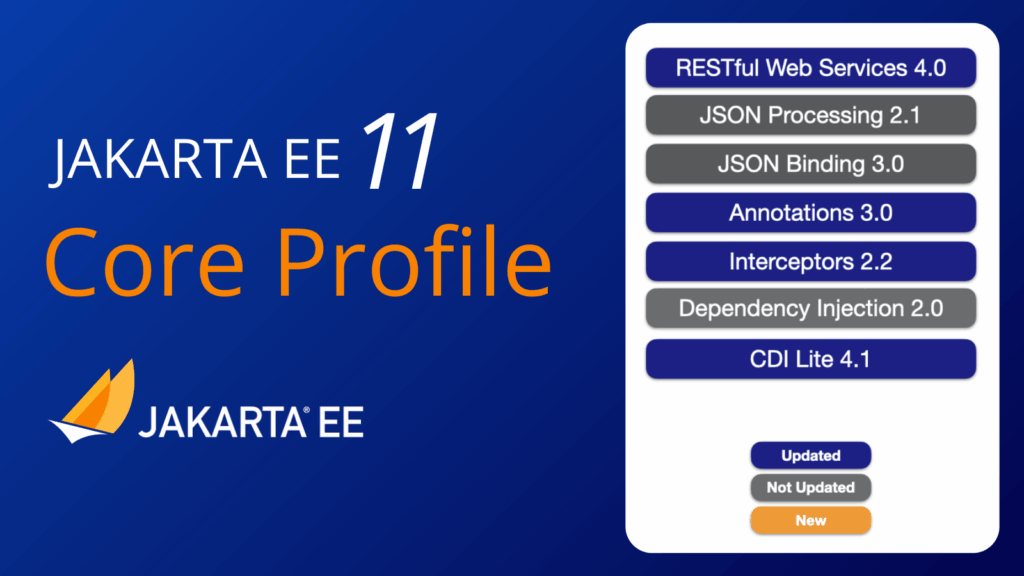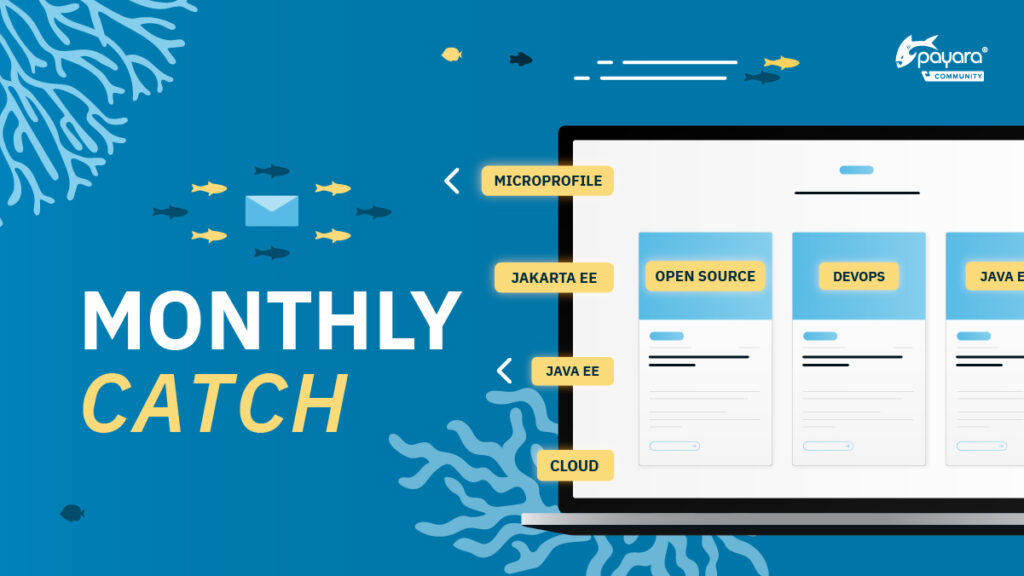 3 minutes
3 minutes
End-of-Life Technology: How to Drive Innovation Without Compromising Stability
When legacy systems approach end-of-life (EOL), enterprise IT teams typically face the choice of moving forward at all costs […]

The release of Jakarta EE 11 represents another significant milestone in the evolution of the Java Enterprise framework. With over 25 years of history since its first release in 1999, Jakarta EE has continuously evolved while maintaining its core principles of stability and enterprise-grade reliability.
Jakarta EE 11 builds upon the foundation established in previous versions, introducing new capabilities like Jakarta Data 1.0 while updating many existing specifications. The platform maintains the namespace consistency established in Jakarta EE 9 with the ‘jakarta’ package structure, maintaining a stable migration path for enterprise applications.
Since older technologies continue to be pruned and specifications evolve to meet modern development needs, Jakarta EE 11 represents the continued modernization of this mature platform. You can see Jakarta EE 11 as the latest evolution of Java Enterprise, incorporating decades of experience in supporting enterprise applications while adopting contemporary development practices.
Since Payara is dedicated to Jakarta EE, we’ve continued our ‘Getting Started with Jakarta EE’ blog series to introduce developers to the latest version. As tradition dictates, we’ll start with the classic ‘Hello World’ example!
You can use Maven build tools to compile and package your Jakarta EE 11 application. With Maven Archetypes, you can bootstrap many types of applications. For the moment, there is no specific archetype for Jakarta EE 11 available. You can start from any other Maven project and adapt the pom.xml file or use the quickstart archetype as follows:
mvn archetype:generate -DarchetypeGroupId=org.apache.maven.archetypes -DarchetypeArtifactId=maven-archetype-quickstart
Alternatively, you can also scaffold a barebones Jakarta EE application from Payara Starter. You will need to download Payara Server Community 7 Alpha to run the example in this blog post. Payara Server Community 7 is our Jakarta EE 11 implementation that is currently in development, expected to be released in the coming weeks.
Whichever scaffolding option you choose, these are the important parts of the Maven configuration for your Jakarta EE 11 project:
Your pom.xml could look like this for the Jakarta EE 11 Hello World example:
<project xmlns="http://maven.apache.org/POM/4.0.0"
xmlns:xsi="http://www.w3.org/2001/XMLSchema-instance"
xsi:schemaLocation="http://maven.apache.org/POM/4.0.0 http://maven.apache.org/xsd/maven-4.0.0.xsd">
<modelVersion>4.0.0</modelVersion>
<groupId>fish.payara.jakarta.ee11.start</groupId>
<artifactId>hello</artifactId>
<version>1.0</version>
<packaging>war</packaging>
<dependencies>
<dependency>
<groupId>jakarta.platform</groupId>
<artifactId>jakarta.jakartaee-web-api</artifactId>
<version>11.0.0</version>
<scope>provided</scope>
</dependency>
</dependencies>
<build>
<finalName>hello</finalName>
</build>
<properties>
<maven.compiler.source>21</maven.compiler.source>
<maven.compiler.target>21</maven.compiler.target>
<failOnMissingWebXml>false</failOnMissingWebXml>
<project.build.sourceEncoding>UTF-8</project.build.sourceEncoding>
</properties>
</project>
You are now ready to open the Maven Project in your favorite IDE and start coding your application.
Now that we have a project created, we can develop the Hello World REST endpoint using Jakarta REST (formerly JAX-RS). REST endpoints are the modern standard for building web APIs and microservices. While Servlets still form the foundation of web applications, you’ll typically use higher-level frameworks like Jakarta REST for building HTTP-based services.
In one of the next Jakarta EE 11 blogs, we will explore more advanced REST features like content negotiation, validation, and data binding, but today we’ll use the typical Hello World demo.
First, we need to create an Application class to bootstrap our REST endpoints:
@ApplicationPath("/api")
public class RestApplication extends Application {
}
Now, let’s create our Hello World REST endpoint:
@Path("/hello")
public class HelloResource {
@GET
@Path("/world")
@Produces(MediaType.TEXT_PLAIN)
public Response sayHello() {
return Response.ok("Hello World from Jakarta EE 11!").build();
}
@GET
@Path("/json")
@Produces(MediaType.APPLICATION_JSON)
public Response sayHelloJson() {
return Response.ok("{\"message\": \"Hello World from Jakarta EE 11!\"}").build();
}
}
You can test your endpoints by accessing:
Getting started with Jakarta EE 11 is straightforward. You just have to define one single dependency for your application that brings in the entire API set of Jakarta EE. We have shown how a Hello World response can be sent back from the server using Jakarta REST and in the next parts of this beginners Jakarta EE 11 series, we will see how other frameworks like Jakarta Persistence, CDI, and Jakarta Faces integrate with REST services to build complete enterprise applications.
Jakarta EE 11 introduces several enhancements:
The platform continues to evolve while maintaining the stability and enterprise-grade features that have made Jakarta EE the choice for mission-critical applications worldwide. Get started with Jakarta EE 11 by downloading Payara Server Community 7 Alpha today!
 3 minutes
3 minutes
When legacy systems approach end-of-life (EOL), enterprise IT teams typically face the choice of moving forward at all costs […]
 5 minutes
5 minutes
November has been one of the busiest months of the year for the Java and Jakarta EE ecosystem. With […]
 3 minutes
3 minutes
Working with enterprise Java databases can sometimes feel like swimming upstream. Jakarta EE 11’s Jakarta Data helps developers glide […]